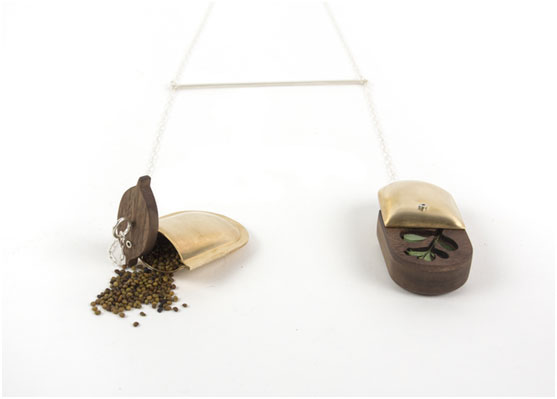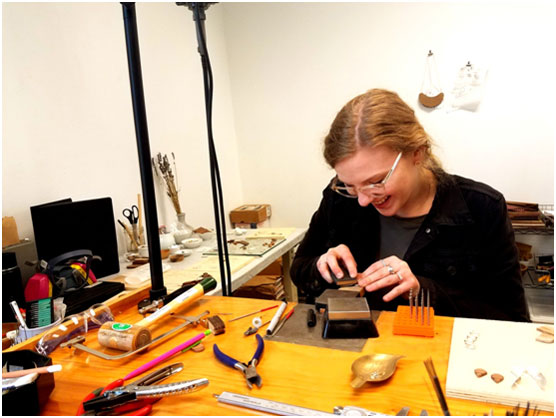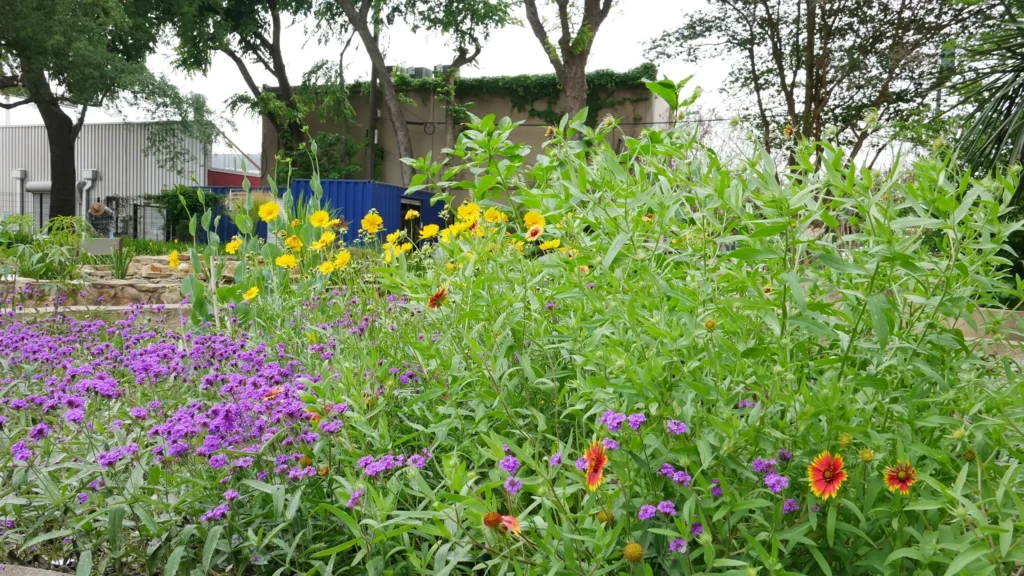The following interview is the second in a summer series of Q&A sessions with current resident artists. HCCC Intern Claire Alderson recently spoke with Rebecca Hewitt, a metalsmith interested in environmental issues and community engagement.

Claire Alderson: When did you get into making jewelry, and how has being environmentally conscious affected your process?
Rebecca Hewitt: I started making jewelry about five years ago, during my second semester of college. I took an intro course and fell in love with metalsmithing, although not immediately (the jeweler’s saw was a difficult tool for me to learn, and I went through piles of saw blades). Metalsmithing is captivating in many ways—there’s tradition, problem solving, and a beautiful community.
I try to be mindful of the processes and materials that I’m using in my practice. When approaching different processes, I consider the impact they might have and, if needed, employ potential alternatives. When approaching different materials, I try to source responsibly and locally whenever I can. Creating a totally ethical practice is impossible, but it’s my responsibility as a maker to continue to evolve my practice in an ethical manner.

CA: In regard to your necklace series, Plant, Protect, and Preserve, how did you come up with the functional aspects incorporated into each piece? Where does the inspiration for your more interactive work come from?
RH: Plant, Protect, and Preserve is a series of work that developed from research on the “special concern” category of the Wisconsin Natural Heritage Working list, which contains all of the plant species that are known, or suspected, to be rare in Wisconsin. This category is for species that may be in need of concentrated conservation efforts or that face some problem of abundance or distribution.
The Plant, Protect, and Preserve series is focused on the wildflower Baptisia Tinctoria, commonly known as Wild Yellow Indigo, and is composed of three necklaces that approach conservation issues in a wearable and welcoming way that encourages reflection and education. Each necklace is created from sustainable materials—such as walnut and dried or pressed flowers that I grew myself—and based on actions of planting, protecting, and preserving. To Plant contains Baptisia Tinctoria seeds in the clasp of the necklace. The wearer carries the seeds around until they are ready to plant, at which point they may take the necklace off. To Preserve is a functioning flower press that the wearer can fill with small plant specimens. I enjoy making pieces with functional uses that are also wearable.
The necklace series is paired with active community engagement through both workshops and objects that directly encourage action to tackle environmental issues. In the first Plant, Protect, and Preserve workshop, participants created collection pouches, flower presses, and planters from recycled materials.

CA: Could you explain the concept behind your Flower Press Project?
RH: The Flower Press Project is something I’ve been working on for the past month of my residency and consists of three components: a zine, community flower-press workshops, and a series of wearable flower presses. I’m still working out the details, but I’m hoping to have drop-in flower-press making in my studio during my last couple of weeks in August!
Gathering and pressing flowers creates an interaction between the gatherer and our sacred environment. This interaction requires patience (pressing flowers typically takes at least a week), encourages self-reflection, and hopefully inspires conversation.

CA: Who have you been the most influenced by as a maker?
RH: I had the opportunity to learn from compassionate, dedicated professors, alongside an extremely connected community of students, while studying at Peck School of the Arts. That engaging and empowering community endlessly influences my practice. I also really admire Natalie Jeremijenko’s work because of how seamlessly she connects community, science, and art.

CA: How has your work evolved since you started your residency at HCCC?
RH: My residency at HCCC has allowed me to further develop my post-graduation practice and given me the opportunity to focus on developing my craft skills, including transitions between materials and improved functionality. I am developing a new body of work (The Flower Press Project) as well as a new production line.
Although it isn’t quite visible in my work, my understanding of the interaction one has with art jewelry has evolved. It’s interesting to work in a space where visitors can view art in the exhibitions and then come into my studio to interact on a more intimate level with art and the artist.
I have also started my first collaboration! I’m working with Vivian Chu, a fellow resident artist at HCCC, on a few wearable pieces. The whole process is very organic—Vivian is turning bulbous wooden forms, and I’m playing with the shapes and fabricating metal components to pair with them. Since our studios are so close, it’s a very conversational collaboration. We can pop into each other’s studios to share progress, pieces, and talk about what to add or make next.
About Rebecca Hewitt
Rebecca Hewitt is currently a resident artist at Houston Center for Contemporary Craft (her residency ends August 31, 2017). She received her Bachelor of Fine Arts from the University of Wisconsin in Milwaukee and is the recipient of the Ethical Metalsmiths Emerging Artist Award from the Ethical Metalsmiths Student Committee and the Best Use of Materials Award, The Art of AdORNMENTS, from the Racine Art Museum. Rebecca also won first place in both the Metals!15 and Metals!16 Harold A. Milbrath Memorial Jewelry and Metalsmithing Prize from the University of Wisconsin. For more information on Rebecca, please visit, https://www.rebeccalynnhewitt.com/.
